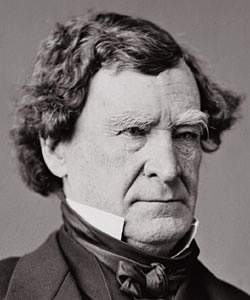Jeremiah Sullivan Black (American National Biography)
Scholarship
The issue that above all others put Black in the center of sectional controversy was the Buchanan administration's response to South Carolina's secession in December 1860. The question split the cabinet into northern and southern factions. Although Black initially believed in the right of a state to secede, he backed away from urging endorsement of that position in response to the president's request for a legal opinion on secession. The attorney general responded that the federal government had a duty and right to collect duties and to defend public property and execute the laws. Yet this right could only be enforced peacefully, and if force were necessary, only Congress could legislate such procedures. Black asserted that Congress could not "arm one part of the people against another for any purpose beyond that of merely protecting the General Government in the exercise of its proper constitutional functions" (quoted in Works of James Buchanan, vol. 11). Black thus took an essentially conservative approach, which became the position of the administration, a stance that cynics argued was tantamount to saying, "You cannot do it, but we cannot stop you if you do." In essence, Black argued that secession was unconstitutional but that the federal government had no power to coerce a seceded state back into the Union.
Frederick J. Blue. "Black, Jeremiah Sullivan," American National Biography Online, February 2000, http://www.anb.org/articles/04/04-00108.html.




